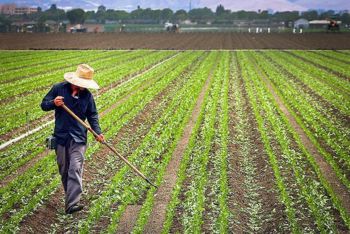News
Back to News
Nestled between the Gabilan and Santa Lucia mountain ranges in Central California is a 90-mile stretch of land that produces strawberries, lettuce, tomatoes, spinach, broccoli, and wine grapes by the ton. As a major producer of fruits and vegetables, the Salinas Valley has come under increasing scrutiny for the large amount of food that goes to waste.
Over the course of just a few months, the Salinas Valley Solid Waste Authority will take in between 4 million and 8 million poundsof fresh vegetables. Food is wasted at every step of the supply chain—from farm to fridge to fork.
Western Growers Association, an ag trade group, hopes to find an answer—or answers—at its new Center for Innovation and Technology, in Salinas. The association, which represents farmers in Arizona, California, and Colorado, is working to build an unlikely coalition between farmers and technology entrepreneurs. The partnership seeks to address some of the country’s biggest food concerns—from waste to water issues related to California’s historic drought.
The center opened last December with the simple, daunting mission of figuring out how to feed a growing world while using fewer resources. To do so, the center wants to bring Silicon Valley–like thinking to a valley better known for growing lettuce. “Salinas is the salad bowl of the United States,” Tom Nassif, president and CEO of Western Growers Associated, told TakePart. Its proximity to Silicon Valley and the Bay Area, he said, makes the region ideal for cross-pollination between the ag and tech sectors. The center offers a workspace with the usual office amenities—printers, conference rooms, kitchens—as well as mentorship and networking opportunities for fledgling agriculture start-ups.
The low rent the companies pay is subsidized by the center’s sponsors, including Taylor Farms and JV Smith Companies, which provide financial support to foster growth for budding ag ventures. According to Nassif, the idea for the center “emanated from a couple of our board members who had been very interested in investing in agricultural technology that would benefit the entire industry and not just themselves.”
One of the center’s main goals is to be the link between tech companies and farmers to ensure that the products going to market are the best they can possibly be. “So often people have wonderful technology that isn’t necessarily commercially viable,” Nassif said, later adding, “If you can put them together with the farmer before they go out into the market, they’ve already gotten that input and they know what the need is.”
The center also hopes to address the concerns of a rapidly evolving consumer base. “We understand that more and more people are becoming concerned about a number of issues, including whether or not these crops are being grown sustainably,” Nassif said. “Are we using too many pesticides? Or is it too labor intensive? Are the workers being taken care of and treated as they should be?”
The center, which has enough space to house 34 companies, has 10 resident start-ups in its building. These companies vary in focus. Some are data-oriented, while others are working to improve quality of product or recycle waste. The center’s staff vets the tech firms, though it doesn’t have specific requirements for joining. “We have a fairly firm understanding of what the needs in the industry are,” Hank Giclas, Western Growers’ senior vice president of strategic planning, science and technology, told TakePart. “We have an overriding premise that we want the center to be a place where start-ups can come and help us, as an agricultural industry, produce more food with less resources.” Ultimately, they are focusing on several problems: water availability, labor availability, environmental performance, and waste reduction.


